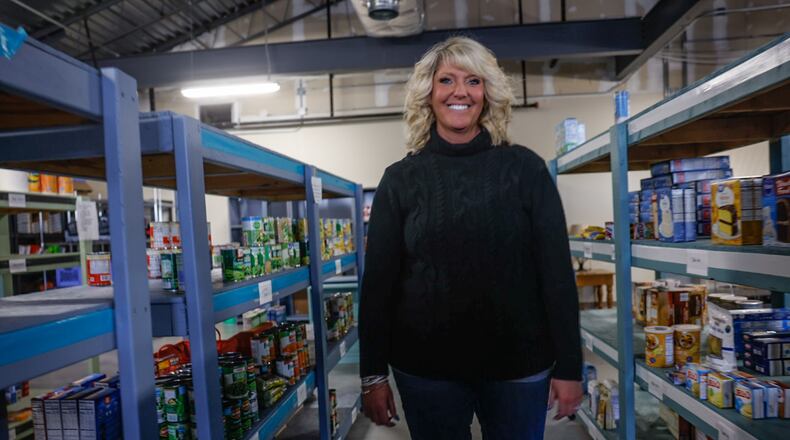Truesdale said The Foodbank served 27,727 families with minor children between Aug. 1 and Dec. 5.
Truesdale said this time of year, with higher energy costs, can strain budgets. And high food costs are also hitting families hard this year.
The universal free lunch program began in March 2020 after schools were shut down during the beginning of the COVID-19 pandemic. The program stayed in place until July 2022. Any student, at any public school, could get a free lunch. Restrictions around how meals could be served were lifted, so schools could send bagged lunches home with kids over weekends and breaks.
Tyra Jackson, the director of Second Harvest Food Bank in Clark County, said this is typically the busiest time of year, and her food bank is seeing an increase in people coming in and needing assistance.
Jackson said those two weeks over holiday break can create a burden for families, since free school lunches won’t be provided.
“So those are two meals each day that they are now going to have to find that wasn’t necessarily in their budget,” Jackson said.
Credit: JIM NOELKER
Credit: JIM NOELKER
To fill the void left by the absence of universal free lunches, schools have encouraged parents to fill out the traditional free and reduced-price school lunch forms. They’ve also connected families to food pantries and reminded them of school-run programs to assist families.
The issue of hunger is present across the community. The Springboro school district has one of the lowest poverty rates in the area, according to the Ohio Department of Education. But it has a Community Assistance Center in partnership with Shared Harvest Foodbank. Scott Marshall, spokesman for the Springboro district, said there has been an uptick in the number of students and their families using the pantry.
“We do send food home for students who previously signed up through our backpack program, through the food pantry,” Marshall said.
Springboro is one of many school districts that have programs to send home food with their students even if the federal government is no longer providing money to do so. Northmont Schools provides backpacks of food for students to take home over weekends through the Community Table’s Backpack Food Friends program, and high schools and middle schools have Blessing Boxes — a standalone food pantry — available for families.
“The district will not be sending home food with students the way we did during the COVID years, but yes, we are being creative and working with families who may have exhibited need,” said Jenny Wood, spokeswoman for Northmont schools.
She said it’s not clear whether there really is additional need, or if the district has just done a better job reaching out to families who may need assistance this year.
Truesdale said the numbers this year are not necessarily higher than previous years, though the fiscal year is not yet over. Between July 2021 and June 2022, The Foodbank served 56,218 families with minor children, and between July 2020 and June 2021, the Foodbank served 62,304 households with minor children.
Truesdale said the high number of people served in the year ending June 2021 may be due in part to the tail end of tornado relief. The number doesn’t include four months when The Foodbank didn’t have to qualify people for their services, she added.
Other schools that have extra food available for students to take home include Kettering, Fairborn and Centerville. Dayton Public Schools said the district works with community partners, such as the YMCA and Omega Community Development Corporation, to make sure families get the food they need, but the district never sent food home with kids pre-COVID.
Need is in the thousands
The number of families with minor children served by The Foodbank, Inc. in Dayton:
July 2020 to June 2021 — 62,304
July 2021 to June 2022 — 56,218
About the Author


